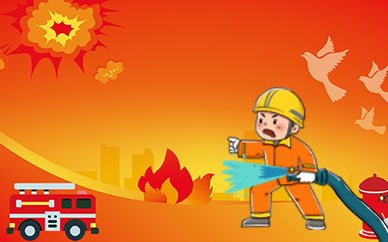ABSTRACT
The influence of BMI on occupant injury risks is studied using Swedish and US car crash data.A clear general trend of increasing BMI over the years is found. No overall differences inMAIS2+ injury risks comparing the different BMI groups were found. However, when stratifyingfor crash modes and body regions, different relations to BMI were found, although not consistentbetween the two datasets. As for occupants of different weight, stature and age, occupants ofdifferent BMI have specific needs with respect to optimal protection consideration in cars.Knowledge of differences in injury pattern is one necessary area of information.
 【资料图】
【资料图】
IN SOME PARTS OF THE WORLD, the general body constitution of the population israpidly growing bigger. One way of categorizing body constitution is to use Body Mass Index(BMI), which is based on stature and weight. Only a few studies have evaluated the influence ofBMI on injury risk from car crashes. Mock et al (2002) studied the relationship between bodyweight and risk of death and serious injury in motor vehicle crashes using NASS data. Mockfound increased BMI associated with increased risk of mortality and increased risk of severeinjuries in automobile crashes. However, when potentially confounding factors were considered,the relationship was less marked. Mock et al. identified that chest injuries were more likely tooccur with higher BMI. This is in agreement with a hospital-based study by Boulanger et al(1992) in which injured, hospitalized motor vehicle crash occupants with higher BMI were morelikely to have sustained rib fractures, pulmonary contusions, pelvic and extremity fractures andless likely to have incurred head trauma and liver injuries. In the two studies the analyses werenot divided by crash mode, thus giving little insight into potential relation to probable injurymechanisms. Arbabi et al. (2003) studied 189 detailed crash cases, separated to some extent bycrash mode (frontal and side impacts), but not stratified in body regions and restraint use. Arbabiet al. found a significant increase in risk of fatality with the obese cohort and indications that theseverity of abdominal injuries was reduced (the "cushion effect") and the severity of lowerextremity injuries was increased. Also, Arbabi et al. emphasized that the overweight cohortincludes people with increased muscle mass, who are not classically "overweight", suggesting aclassification based on direct morphologic measurements to be more correct. Wang et al (2003)determined the effect of differences in subcutaneous fat depth on injury patterns in car crashesbased on 67 adults, all having MAIS 3 or higher injury. Increased subcutaneous fat depth wasassociated with significantly decreased injury severity to the abdominal region of females, and asimilar, but not statistically significant finding for men. In the latter two studies all the occupantswere injured, thus giving information regarding injury severity risk only.
The trend of injury risks (MAIS 2+ and AIS 2+ per body region) versus BMI is evaluated inthis study, stratified by crash mode when applicable.
METHODS
Data related to 41,914 occupants from Volvo's statistical accident database in Sweden (years1976-2004) and 4035 occupants from NASS (CDS) in USA (years 1998-2002) were analyzed.The Swedish data set consists of information about Volvo cars only; data were collected based ona repair cost limit (currently 45000 SEK). The selection from NASS is car size (similar to largeVolvo models) and general safety performance (within 95% confidence interval of the death rateranking of Volvo cars, IIHS 2000). Occupants 150 cm and taller were selected. Occupants withBMI<13, age ≤ 13 or sitting in a seat not equipped with seat belt were excluded as well as thosewith missing weight information. BMI is calculated as weight/stature2 (kg/m2). BMI groupsaccording to Centers of Disease Control and Prevention (CDC, 2005) were used; underweight(<18.5), normal (18.5-24.9), overweight (25.0-29.9) and obese (≥30). As an example; a person170 cm tall is considered normal if weighing 54 kg to 72 kg.
As seen in Figures 1a and b, 32% of the occupants in the Swedish data are classified asoverweight or obese as compared to 45% in the US data. The distribution of BMI groups versusseating position, including percentage of belt usage for each group and position, is shown inTable 1. Seat belt usage is not significantly different between the BMI groups. There is agenerally higher seat belt usage in the Swedish dataset as well as a larger number of 3-point seatbelts as compared to the US dataset.
RESULTS
A general trend of increasing BMI over the years is shown in Figure 2. The Swedish datashows an increase from mean BMI of 23.4 in 1976 to 24.6 in 2004. The US data set shows anincrease of 24.5 in 1993 to 25.8 in 2003.
There is no general trend between maximum AIS 2+ (MAIS 2+) injury risk and the differentBMI groups for all occupants and the subgroups shown for the two datasets in Figures 3a, b. Thetrend of increased MAIS 2+ injury risk for the unrestrained occupants in frontal impacts in theSwedish data (Fig. 3a) can not be seen in the US data (Fig. 3b). When stratifying this group intobody regions, the most obvious relations between AIS 2+ injury risks (per body region) and BMIwere seen for chest and lower extremities in the Volvo dataset (increased trend) and for head andface in the US dataset (decreased trend).
The AIS 2+ injury risks per body area and BMI group for restrained occupants in frontalimpacts are seen in Table 2. No general relationship between MAIS 2+ and BMI can be seen foreither of the two datasets (Fig. 3a, b, and Table 2). When stratifying by body parts, differenttrends can be seen for the two datasets; AIS 2+ chest injury risk being most pronounced, relatedto increased BMI in the Swedish dataset and AIS 2+ lower extremity injury risk in the US dataset.
Arbabi et al. (2003) and Wang et al. (2003) suggested that abdominal injuries are reduced withincreased BMI. In this study, no relationship between AIS 2+ abdominal injury risk and BMIcould be seen for the total number of occupants, nor for the unrestrained occupants in frontalimpacts. However, in side impact for occupants on the struck side, an increasing trend of AIS 2+abdominal injury risk for increased BMI could be seen in the Swedish data but not in the NASSdata.
DISCUSSION
This study explores the injury risk differences as a function of BMI using real world crashdata, involving both injured and uninjured occupants. No general relationship between BMI andMAIS 2+ injury risk was found. When stratifying by frontal and side impacts, a trend was found,suggesting an increase in MAIS 2+ with increased BMI for the unbelted occupants in frontalimpacts in the Swedish dataset. Chest AIS 2+ injury risk was found related to increased BMI forrestrained as well as unrestrained occupants in frontal impacts in the Swedish data, supportingfindings by Boulanger et al. (1992) and Mock et al. (2002), while lower extremities was alsofound to be related mainly for the unrestrained occupants. A relationship between increased BMIand decreased risk of head and facial injury risk for unbelted occupants in frontal impacts wasseen in the NASS data, supporting the observations by Boulanger et al. (1992). The "cushioneffect" as suggested by Arbabi et al. (2003) was not found in this study. An effect of BMI onabdominal injury risk was seen in the Swedish data in side impacts, and there with a reverserelation as compared to the hypothesis of Arbabi et al. (2003).
The findings in this study, which are based on two different datasets, suggest partly differenttrends and emphasize the complexity of understanding the influence of BMI on injury risk. Asdiscussed by Wang et al. (2003); an individual's fat depth can influence his body's ability totolerate injurious forces, acting both as an energy absorbing material but also increasing theoccupant's kinetic energy and thus increasing the loads. BMI might not be the optimal measure ofbody constitution. Using available datasets, a factor based on occupant stature and weight was theonly feasible measure. Wang et al (2003) used subcutaneous fat depth as an indicator of bodyconstitution. However, this information is only available in limited hospital datasets, where alloccupants are injured, and will provide another type of information as compared to the data usedin this analysis.
The general increase in body size in the population adds a new dimension to occupantcharacteristics. For this reason it is important to understand the difference in injury occurrencebased not only on occupant size, such as stature and weight, but also the aspect of bodyconstitution. Occupants of larger size than normal might have specific needs with respect tooccupant protection in cars. A short and heavy driver constitutes a different loading pattern on therestraints as compared to a tall driver of the same weight. Even if the data suggests a "growingpopulation" in some countries, it is suggested that the focus of occupant protection activitiesshould not be moved from normal sized to a larger sized occupant, but rather the scope of theseefforts should be expanded to include this dimension of occupant characteristics.
Knowledge of differences in injury patterns is only one area of information needed. Otherimportant areas are knowledge regarding differences in respect to anatomy, ergonomical issuesand biomechanical tolerances and mechanisms. Research is strongly encouraged in order togather more data to be used as a basis for car safety improvements focusing on this dimension ofoccupant characteristics.

















































































































